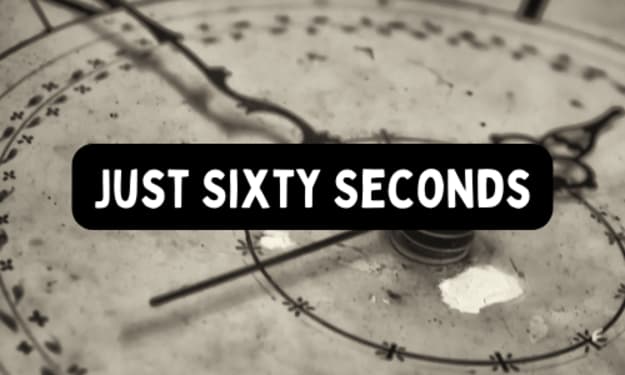Five Ways To Start Strong With Your Creative Project
Exercises to help you get started. To keep going. And then get it out there.

It can be lonely embarking on a major new project. A book. An album. A new product, business, course, menu, exhibition, film.. The early days are full of hope and excitement, but they’re also a time to protect your ideas fiercely. They are fragile at this point, with very little flesh on their bones. It’s easy to lose faith in them, to give up.
So here are some ways to start strong. And to keep going when the way ahead isn’t entirely clear.
1. Write a love letter to your creative self
Julie is a university lecturer who came to me for support while starting work on her first novel – a long-deferred dream. To begin making things up after years of writing factual academic papers, she needed to access a different side of her personality. To commit to months of difficult, lonely work on an idea that might not even bear fruit, she also needed to be besotted with her inner author, to look forward to spending time with that long-buried part of herself.
We had the idea of making writing sessions feel like dates, a secret affair with the page that she could enjoy even after a busy day at work, and a precious tryst to protect at weekends, when friends and family had their own needs and demands.
To reinforce this, she wrote a letter to the part of herself that had always wanted to write stories, who hid in the school library at lunchtime and read with a torch in bed after lights-out at home. The letter detailed the adventure they were about to embark on together, and it became something she could go back to for support and inspiration, when the writing got tricky.
If you like this idea, here are some questions you might want to answer, in your own letter:
- Who is your creative self?
- What’s brilliant about her/him/them?
- Why do you want to commit to spending regular time with this aspect of yourself?
- What skills do you have to bring to this journey?
- What experiences, talents, stories, unique viewpoints can you share and bring to your new project?
2. Create an avatar
A while ago, I coached a promising young artist who was struggling with Imposter Syndrome, and a strong sense that it was too risky to put her work out there, to make herself more visible.
What helped was talking about the singers and actors who had inspired her as a teenager, and thinking how powerful it would have been if she had also been able to see successful sculptors and painters who were more like her: young, black, and female.
She realised that she could influence the next generation of young artists, simply by being herself. From then on, she showed her work and did her marketing and press with a specific audience in mind: 15-year-old women of colour who wanted to make art, but weren’t sure that they were allowed or welcome in that arena.
Whenever she felt nervous stepping up and playing big, she thought of those girls, and what it might mean to them to see her as a role model, fearlessly making her work. It gave her the courage she needed, to put her work out there, to talk about it and really own what she was doing as an artist.
So make an avatar of your own.
Whatever your medium, it can help to create an ideal viewer, reader, audience, representing the people you’re creating your work for. It really helps to have this audience in mind sometimes, as you work. And as you draw attention to your creative work with interviews, a website, or marketing.
Really bring her to life, know your avatar. What she likes, what she wants, what she needs. What she’s afraid of, what her challenges are, what makes her angry. And what your work might mean to her. (Or to him/them, of course.)
Aiming your art at a specific audience doesn’t exclude others.
Adults read the Harry Potter books, or His Dark Materials. Men watch Sex In The City. White audiences go to see Spike Lee films. I travelled the world in my imagination and learned about other cultures way before I ever got on a plane, thanks to authors who probably didn’t expect their books to ever be translated into English, let alone devoured by a curious teenager from Birmingham.
Later, this avatar might also help you with things like titles, cover art, press releases. But once your project is ready to go out into the world, you could also choose to keep your avatar private, and let your work find an audience of its own.
3. Write a manifesto for your project
It helps if you feel what you’re working on is about more than you and your career. Be as big, bold and ambitious as you can. Go absurdly over the top, if you want to. (No one but you need ever read it.)
- What will your work do in the world?
- Why does it need to exist?
- What stories do you want to tell, what emotions to you want to evoke – and why?
- How will people use what you’re making?
- How could it change those people?
Out of that, find a rallying cry, a motto, a statement you can use to remind you of the reason you’re embarking on this creative quest. Put it on your studio wall, on your screensaver, wherever else might catch your eye when you’re feeling lost. Use it to inspire you. Especially on the days when you want to give up.
You don’t have to share this with anyone. But later, it might also be useful in creating your marketing and sales materials. You speak much more clearly when you know who you’re addressing, and what your work is for.
4. Make a contract
Before you begin, make a commitment to yourself. Write it out as a contract, and sign it.
- What’s the bare minimum amount of time you’re going to spend working on your project?
- Will this be every day, week or month?
- When/where will you create time and prioritise it?
- How will you protect and fight for that time?
- And what will you do when the going gets tough? (Because it will.)
Be aware that this is your time for creating. For actually doing your work. You will always write in that time. (Or make music. Or art. Work on your designs, your film, your performance. Whatever it is you want to do.)
It’s time to do your verbs. Not for thinking, dreaming, procrastinating or researching (though it’s important to make time for all of these things, too).
We all have bad days.
But even if you do it badly, you’ll learn something. And doing some work, no matter how pointless it feels, will also get your mind subconsciously working on the problems you need to solve to move forward.
If you put at least your minimum time in, you’ll find an answer suddenly comes when you’re in the shower, walking to the bus stop, or queuing at the supermarket. But this magic only happens when you’re showing up, regularly, to do the work.
5. Get accountability
You probably don’t want to share the details of what you’re working on. Especially not in the fragile, early stages when ideas are easily crushed, or frightened away.
But it can still help to have someone who cares that you’re putting the hours in, that you’re hitting your milestones, that you’re showing up to do what needs to be done. This can be a friend with a creative project of their own, a buddy in an online forum, a group, a mentor, a teacher, a colleague, a creative coach.
Schedule regular check-ins (weekly, monthly, quarterly; whatever works for you). Share your wins, your challenges, help each other when you can and cheer each other on. A companion can keep you on track, and make the whole journey less lonely.
About the Creator
Sheryl Garratt
Sheryl Garratt is a former editor of The Face and Observer magazines, and has written professionally for more than 30 years. She is also a coach working with creatives of all kinds. Find her at thecreativelife.net






Comments
There are no comments for this story
Be the first to respond and start the conversation.